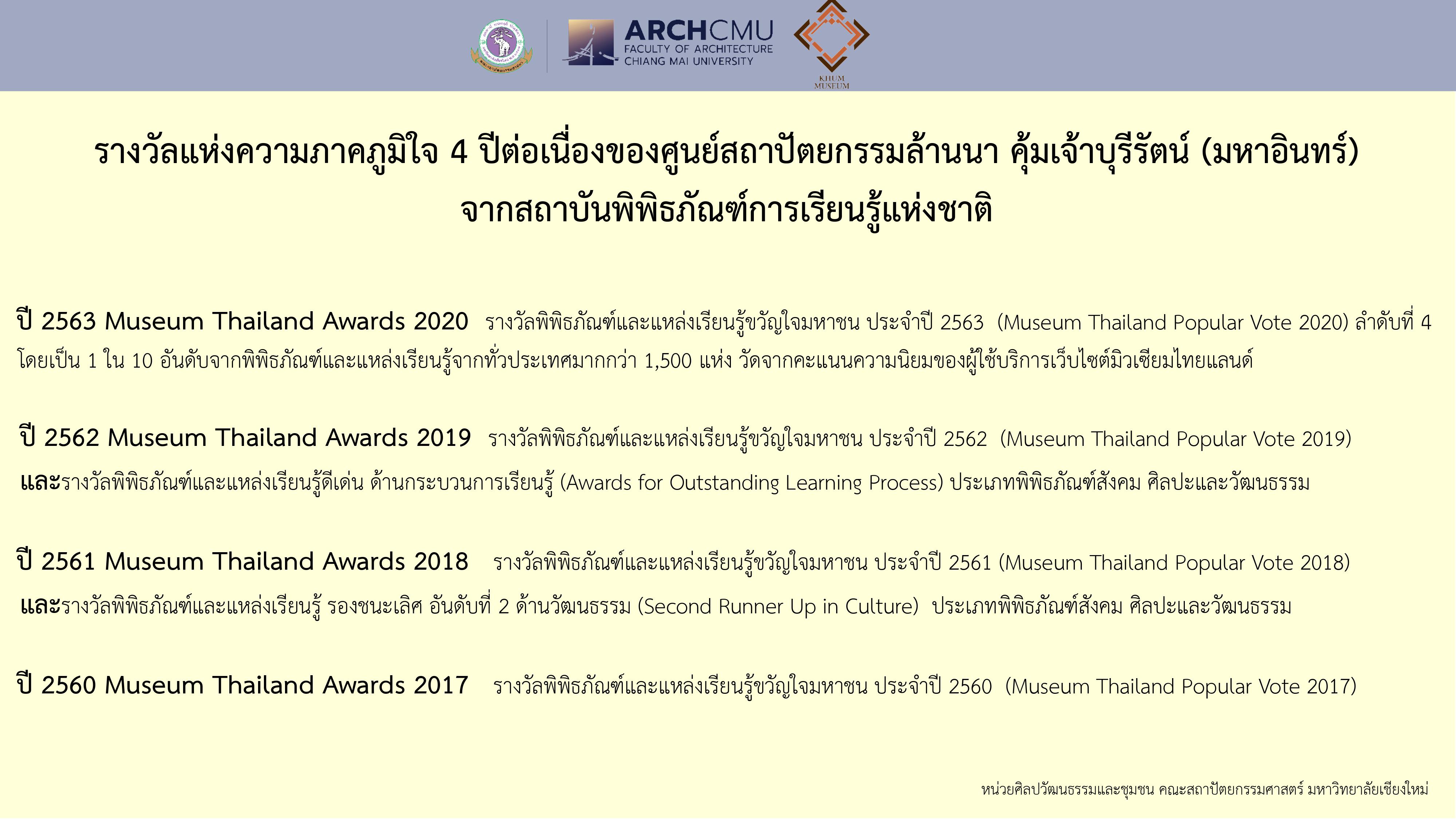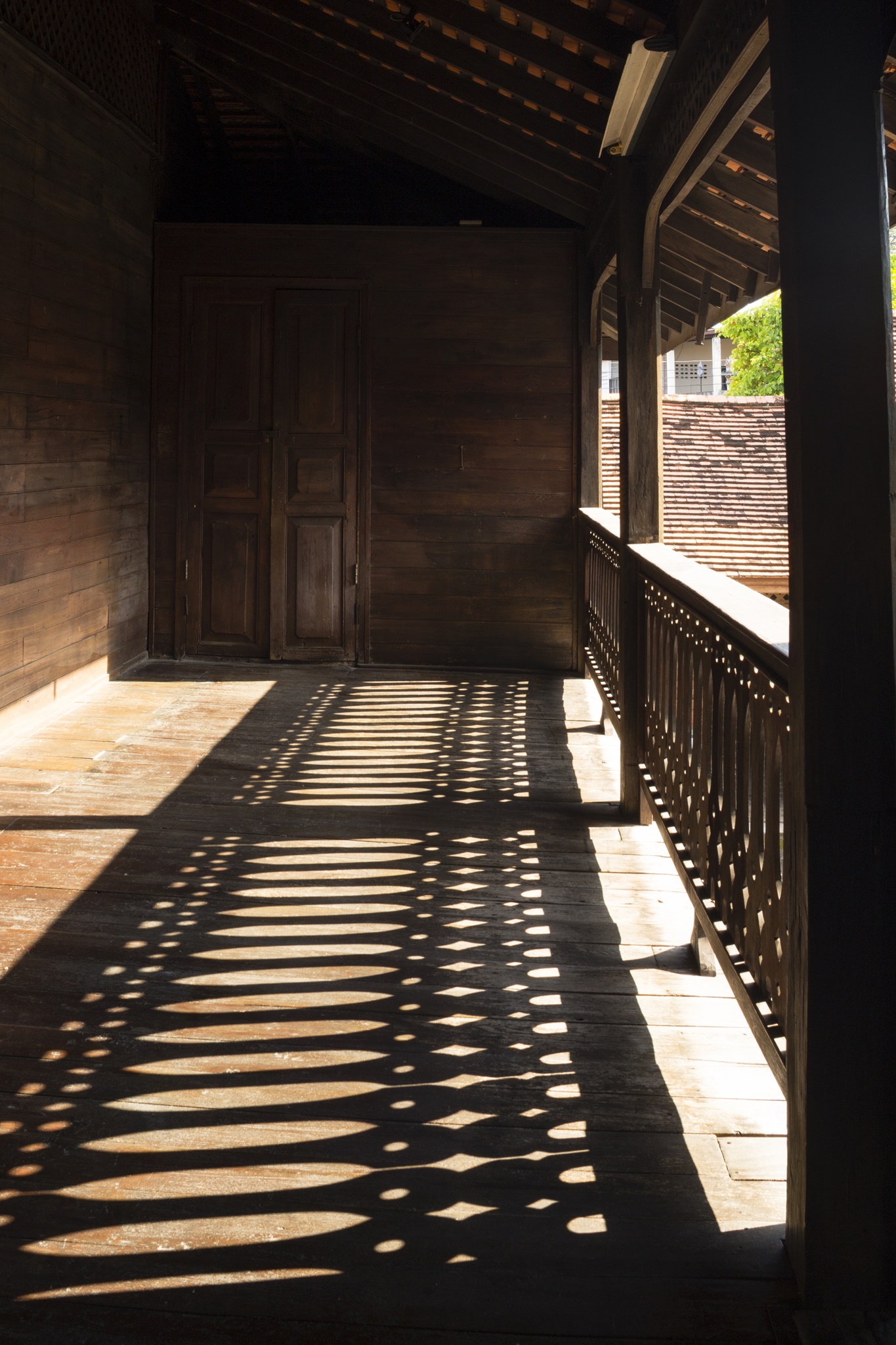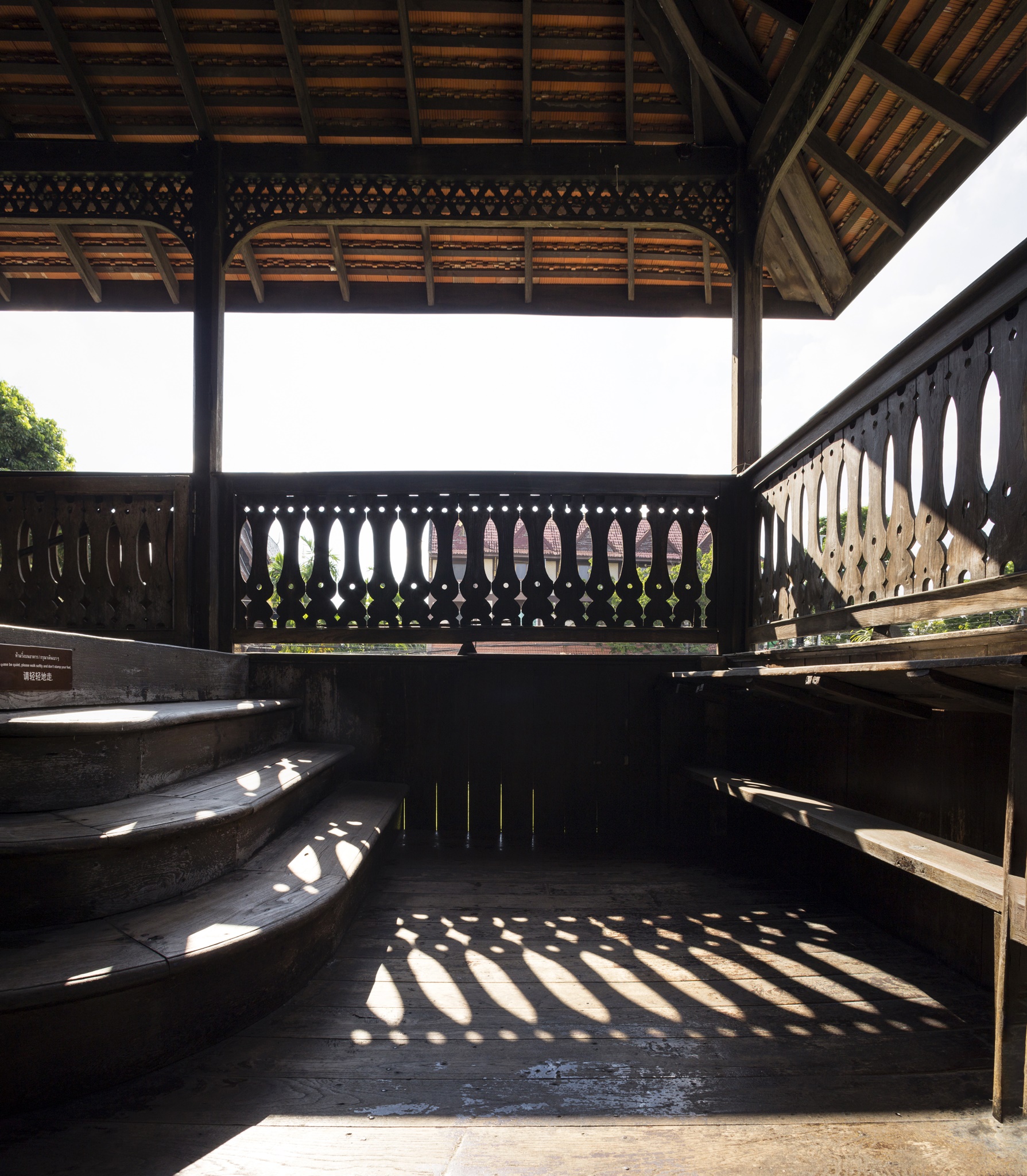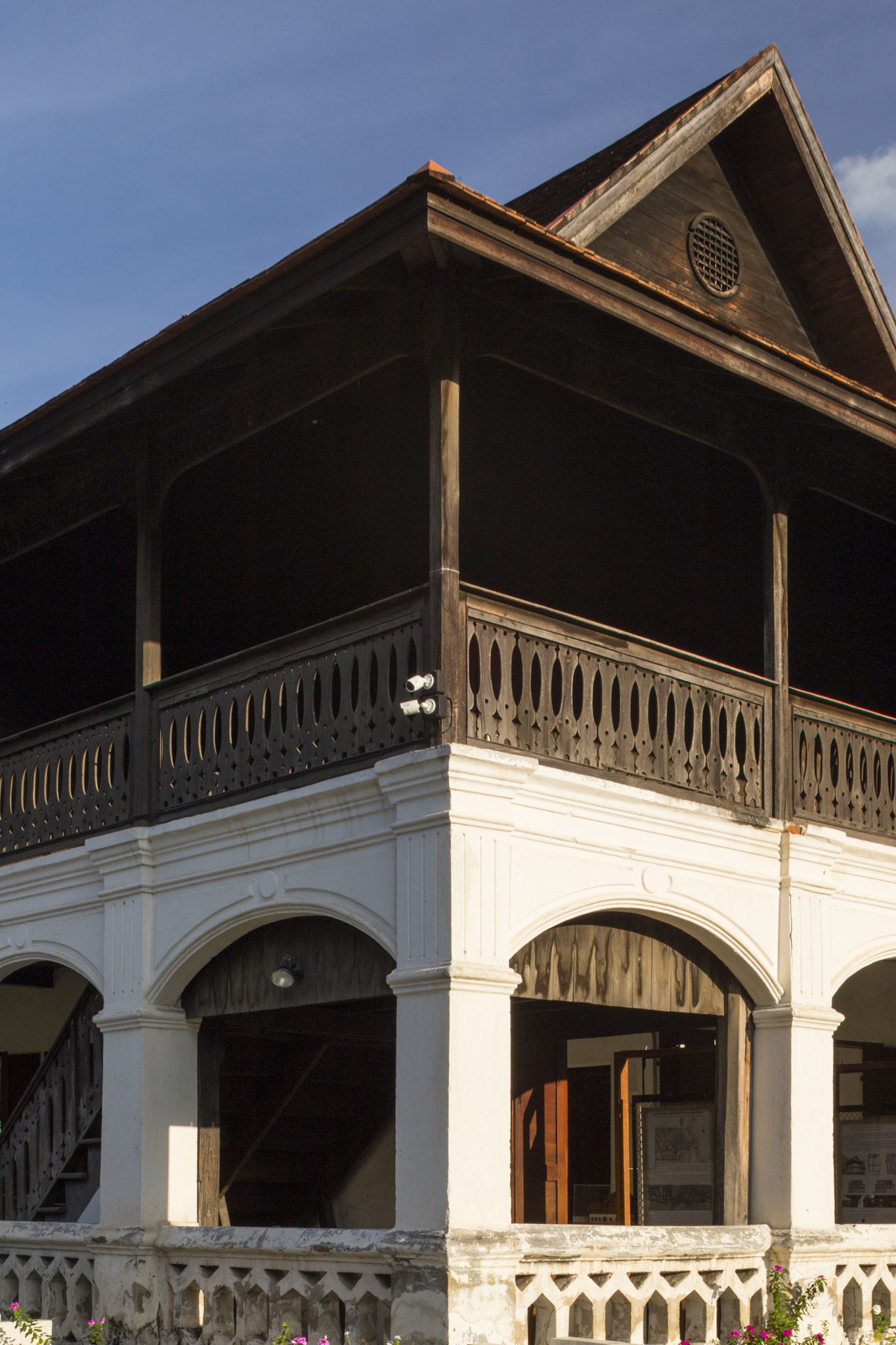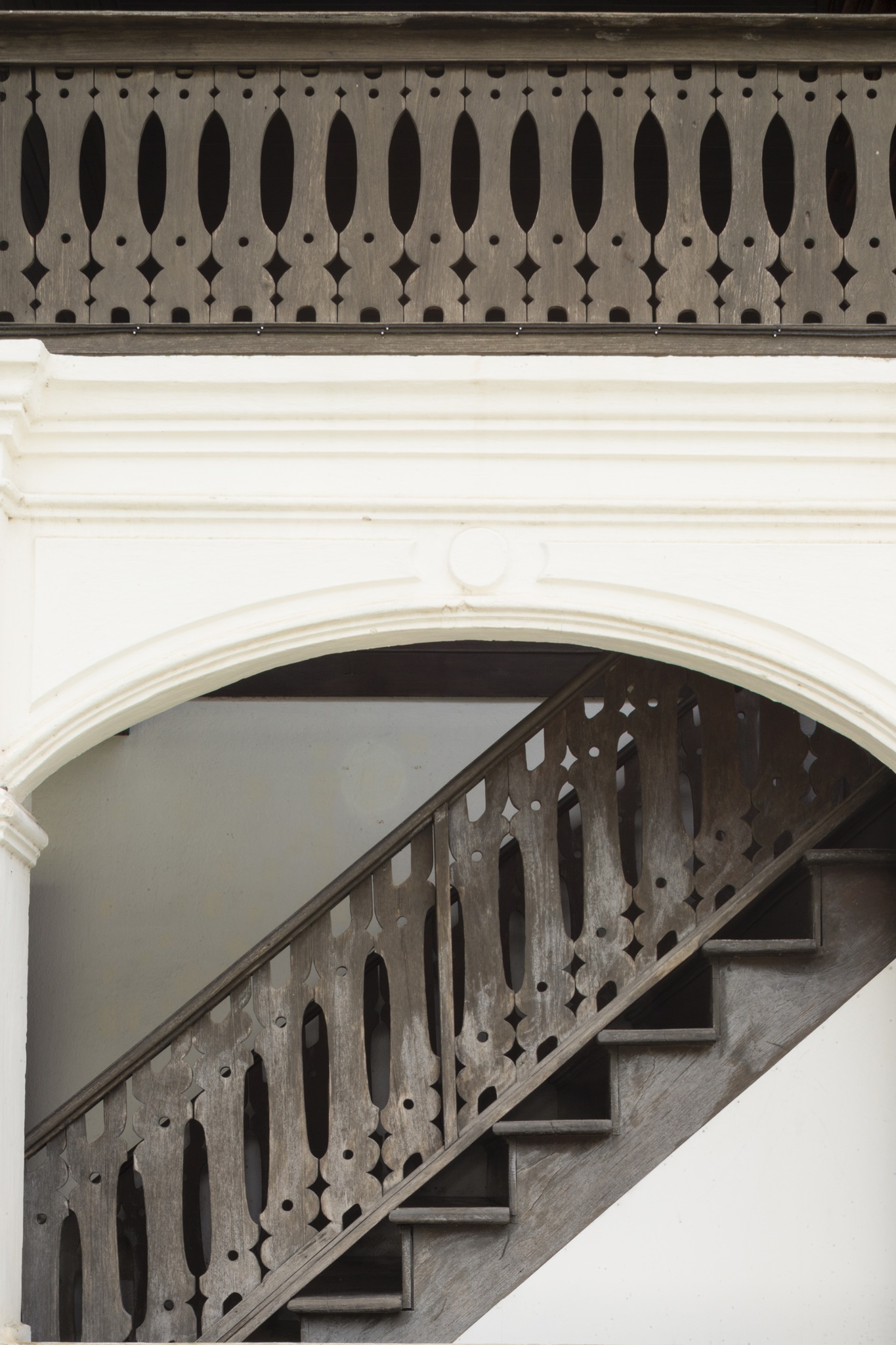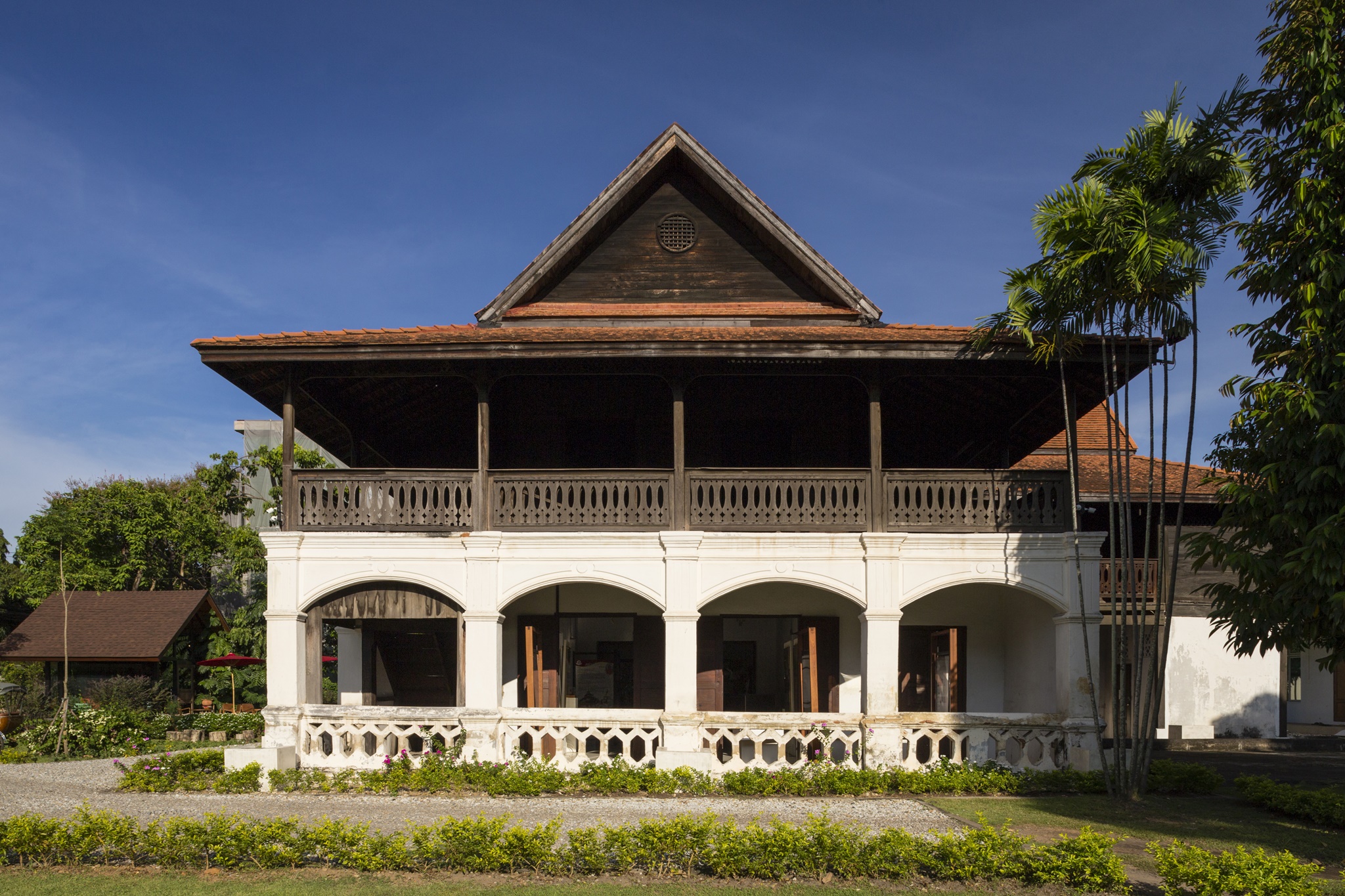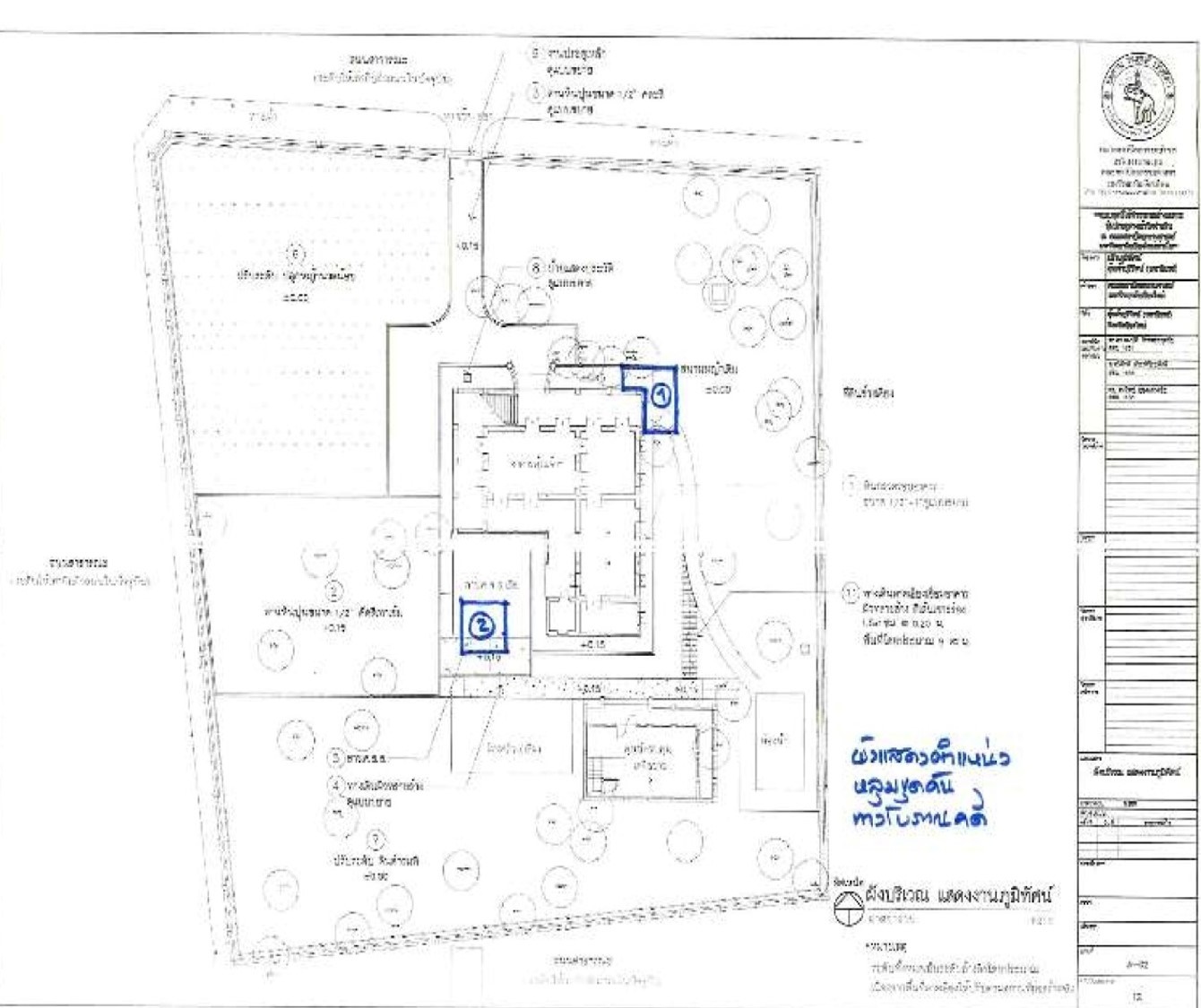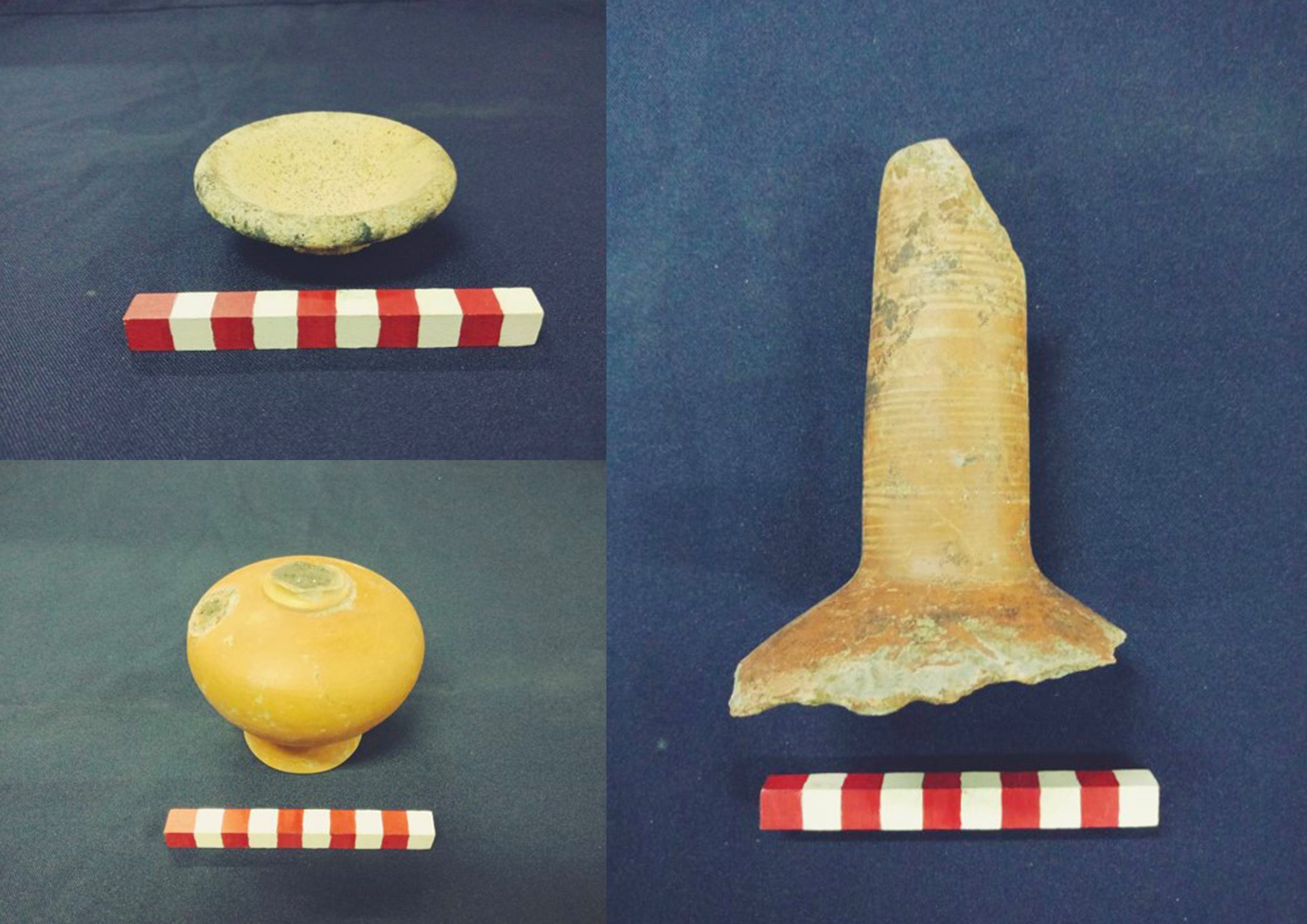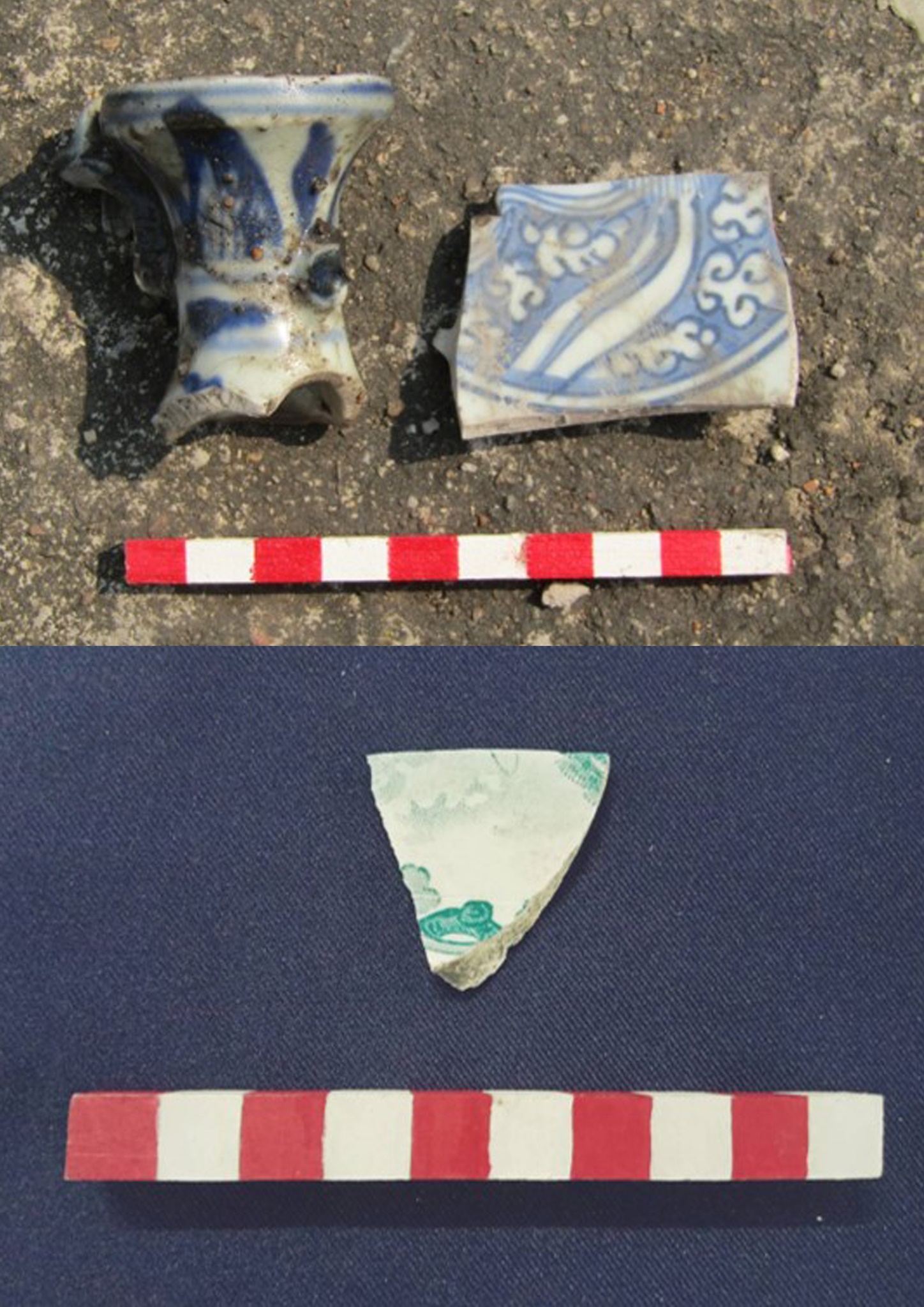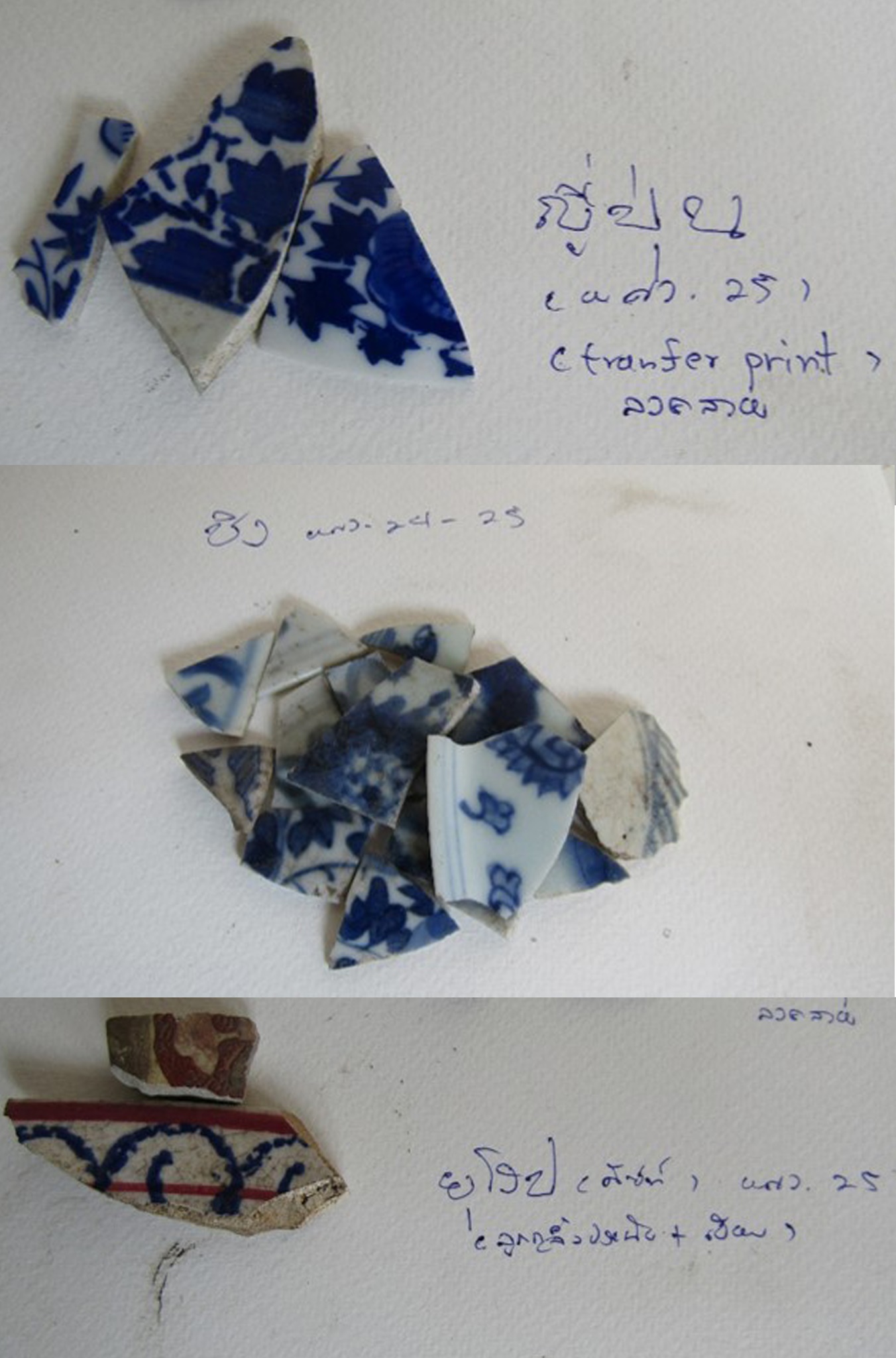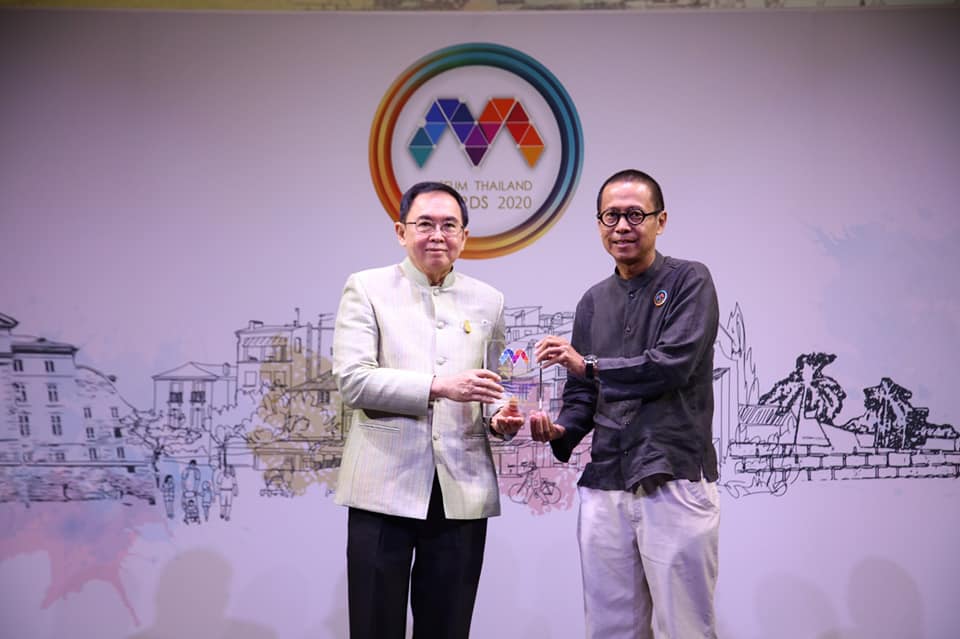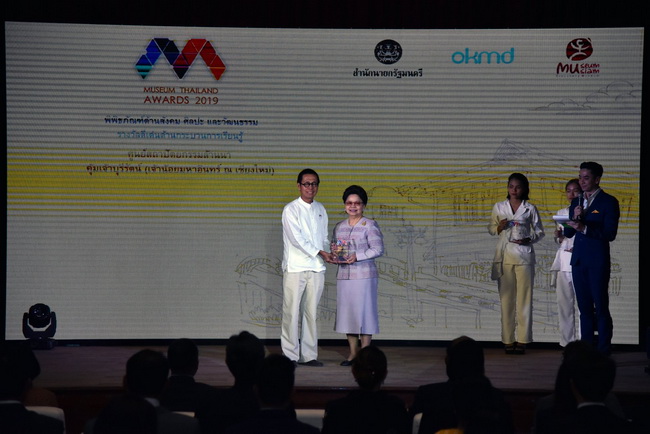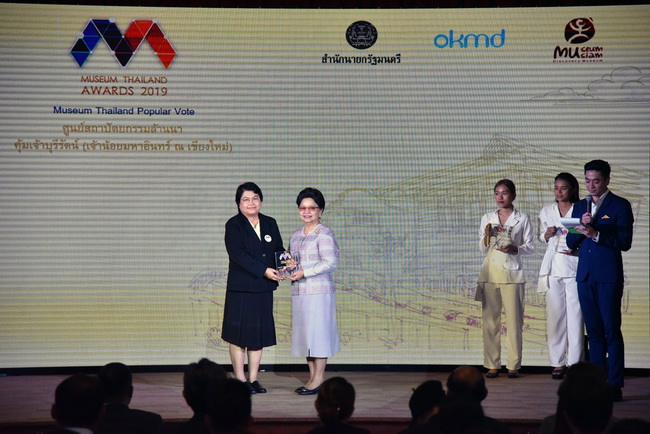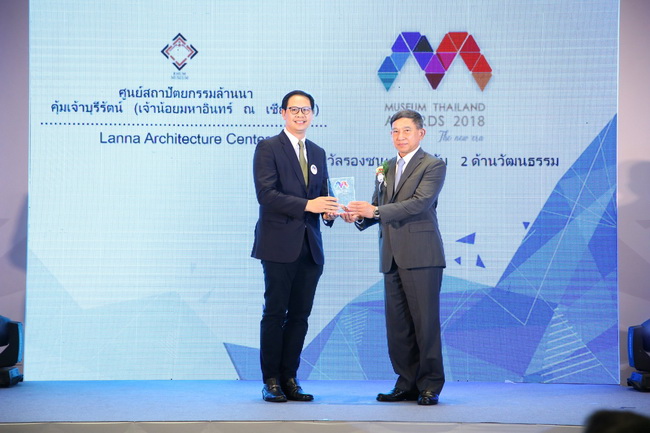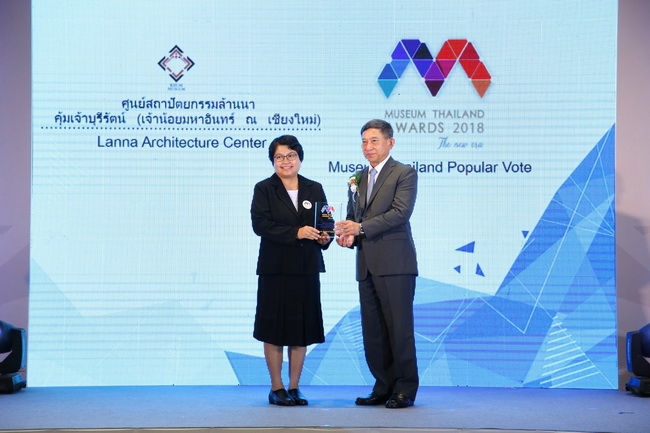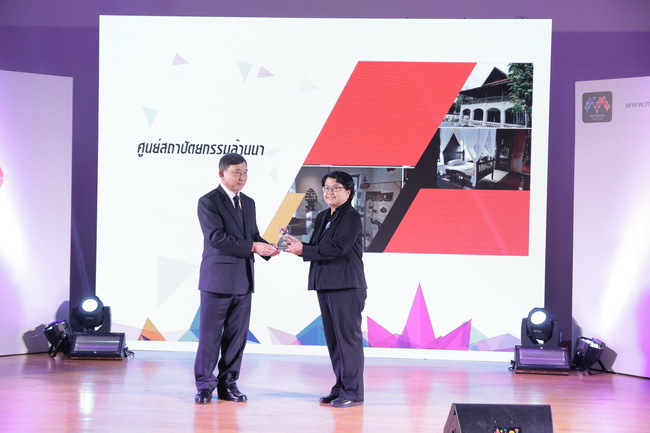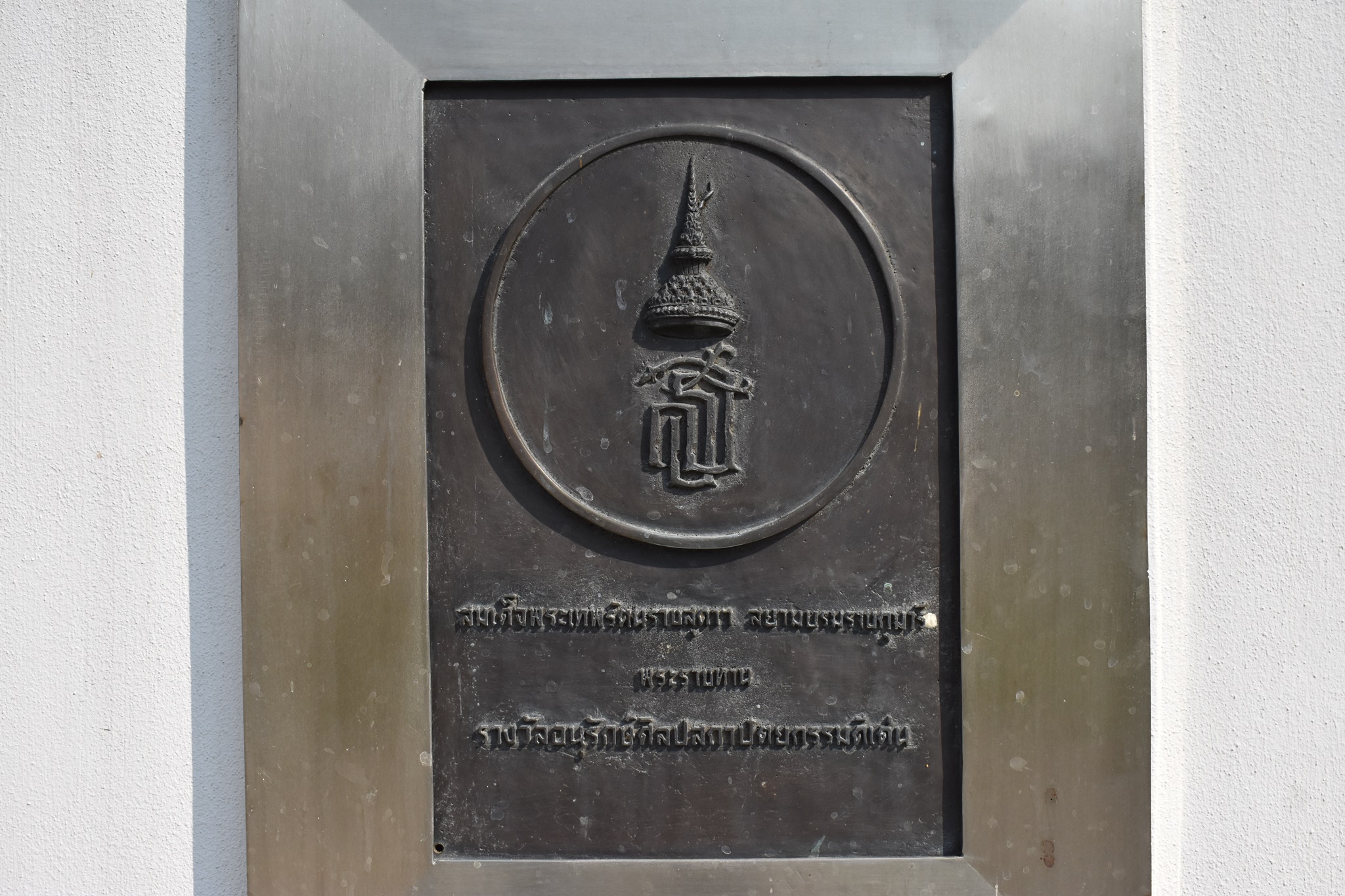คุ้มเจ้าบุรีรัตน์ มหาอินทร์ สันนิษฐานว่าสร้างในช่วงปีใดปีหนึ่งระหว่าง พ.ศ. 2416 – ก่อนปี พ.ศ. 2425 โดยในช่วงแรกใช้เป็นอาคารบ้านพักอาศัยของเจ้าน้อยมหาอินทร์ ซึ่งตำแหน่งเจ้าบุรีรัตน์มีลำดับความสำคัญ เป็นลำดับที่ 3 ในกลุ่มเจ้าขันธ์ห้าใบ แต่เดิมใช้ชื่อตำแหน่งว่า เจ้าหอเมืองแก้ว และในเวลาต่อมา พระบาทสมเด็จพระจอมเกล้าเจ้าอยู่หัว รัชกาลที่ 4 ได้ทรงเปลี่ยนชื่อตำแหน่งเป็น เจ้าบุรีรัตน์ ในปี พ.ศ. 2399 ตำแหน่งเจ้าบุรีรัตน์มีหน้าที่ในการช่วยเจ้าหลวงเชียงใหม่บริหารบ้านเมืองคล้ายกับตำแหน่งของตำรวจในปัจจุบัน มีหลักฐานว่า อาคารคุ้มเจ้าบุรีรัตน์ มหาอินทร์ เคยใช้เป็นคุกในการกักขังนักโทษที่ได้ย้ายมาจากคุ้มเจ้าบุญทวงศ์ ที่เสียชีวิตในปี พ.ศ. 2425 ในช่วงเวลาเดียวกันเจ้าบุรีรัตน์ มหาอินทร์ ได้เป็นแม่ทัพไปทำศึกกับเจ้าฟ้าโกหล่าน เมืองหมอกใหม่ แคว้นฉาน จนได้รับชัยชนะและเป็นแม่ทัพในการปราบกบฏพญาผาบ ทำให้ปี พ.ศ. 2432 ในปัจจุบันเป็นพื้นที่ที่คาดว่าเคยเป็นคอกในคุ้มมาก่อนคือ บริเวณชั้นล่างของอาคารคุ้มเจ้า ซึ่งปัจจุบันเป็นห้องสำหรับจัดนิทรรศการทางประวัติศาสตร์
About
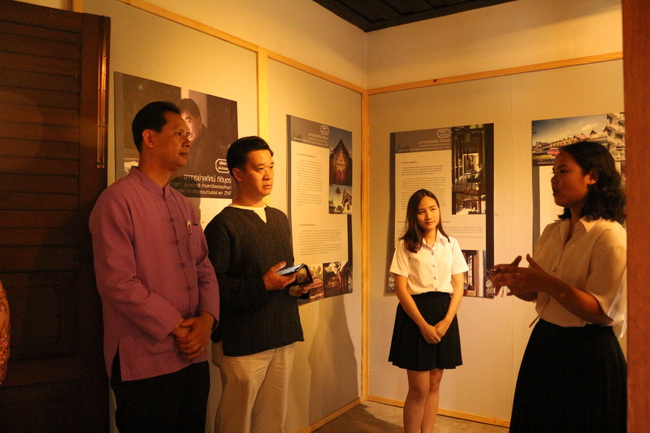
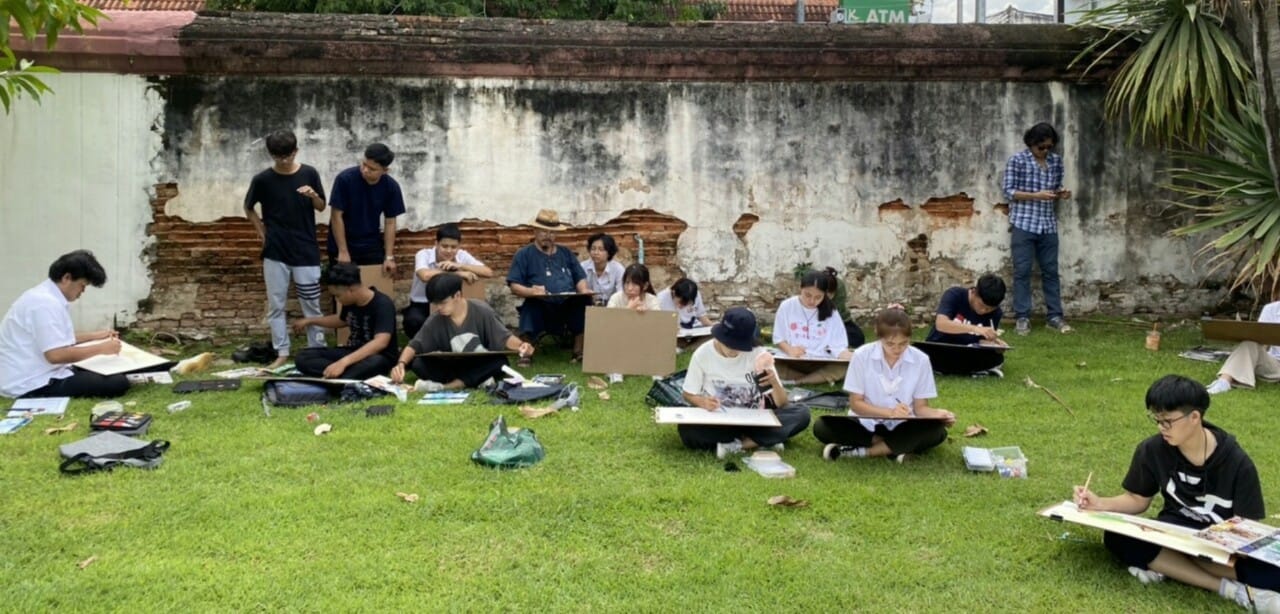
- To be one of the region learning centers to study Lanna architectural history
- To be a center to do research on Lanna architecture and other local architecture
- To be a center to collect and analyze data for conserving and renovating Lanna architecture
- To be a building sample that is conserved and renovated appropriately following the conservation rules – conserving for the young generation and to be a model for other organizations in Thailand
- To be a meeting place for architects and general people to discuss and exchange their opinions towards local architecture as well as to cooperate about the method to apply or create characteristics of Lanna architectural works
- To improve people’s understanding on architecture and to encourage local people to see the importance of culture, history, and architectural conservation
- To be one of the important historical tourist attractions in Chiang Mai
History
Historical Background
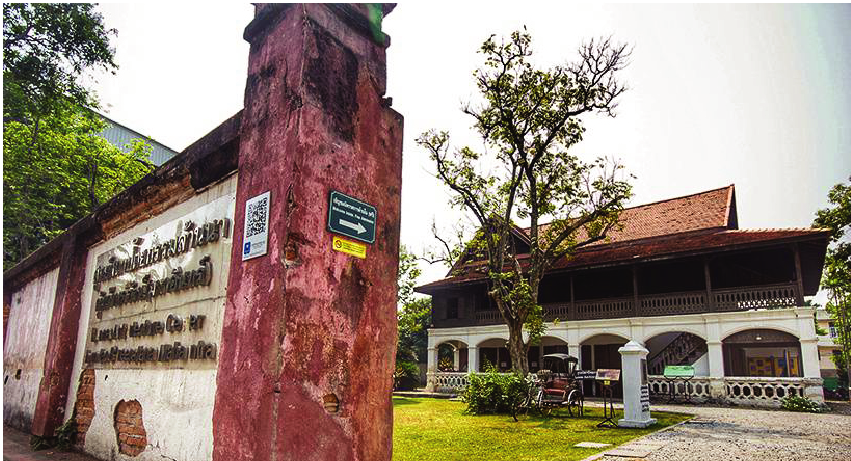
The Faculty of Architecture, Chiang Mai University was founded in June 1995. After a couple of years of innovative approach in teaching, learning and researching Architecture, the Faculty of Architecture, on the 3rd of June 2000, was completely authorized to take on faculty status by having the first graduates in 1999. Since the Faculty of Architecture has been giving importance to the study of historical Lanna architecture and architecture conservation throughout the past years, we had provided courses concerning architectural history and applied Lanna architecture. Those courses were provided to make a clear understanding and good basis for students on architecture to lead the students to the highest ability to appropriately apply their knowledge and creativity in contemporary architecture design. Because of those reasons, the Faculty of Architecture had aimed to establish Lanna Architecture Center to be a center that collects, stores, and educates Lanna architectural history from past to present and to be one of the region significant centers that propagates important information to students, researchers, and people who are interested.
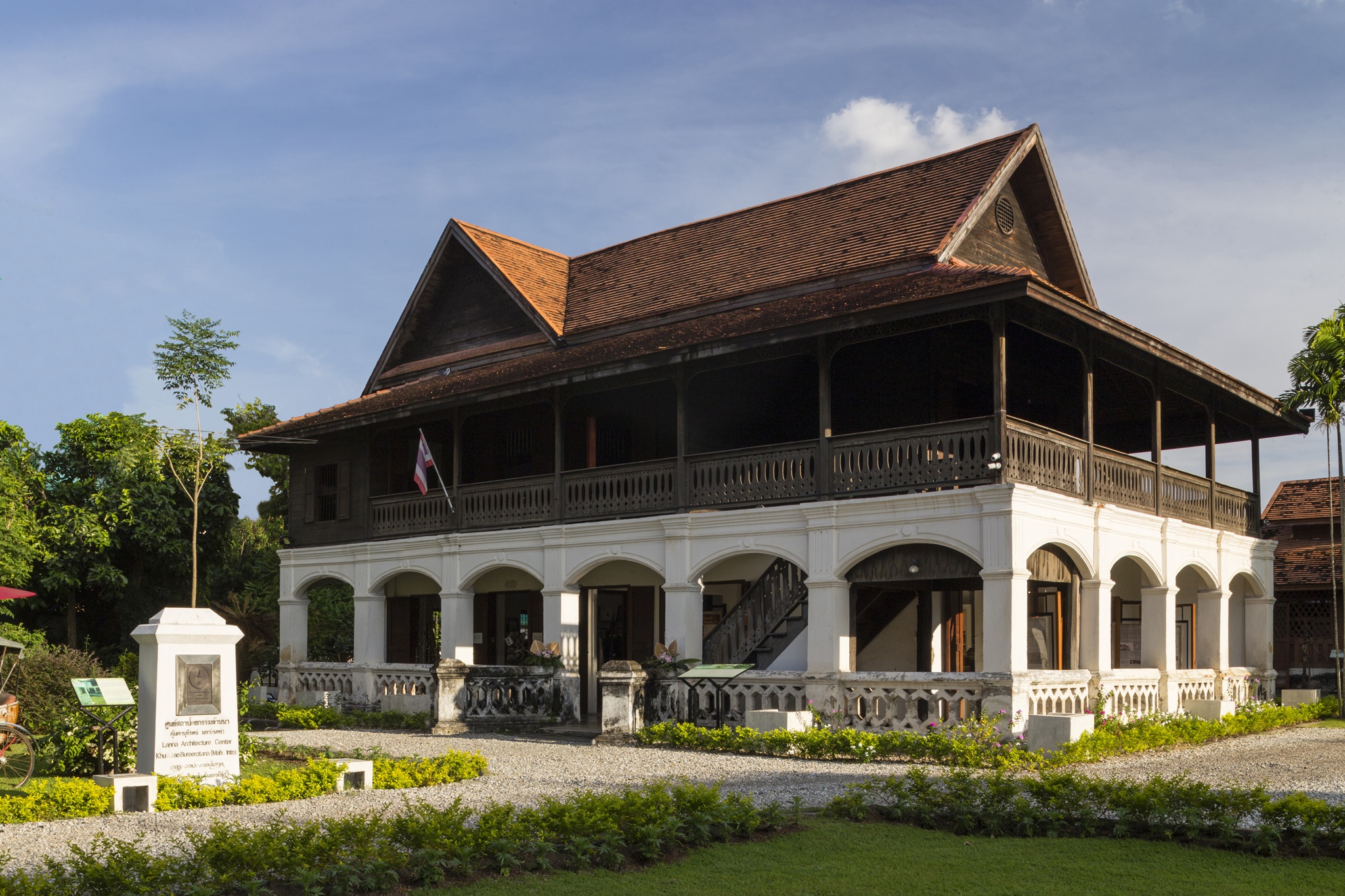
Now, Lanna Architecture Center has been a department under the Culture and Community office, Faculty of Architecture, Chiang Mai University, which is responsible for doing research, collecting, and presenting lanna architecture and related cultural information. The office is located at Khum Chao Burirat (Mahain), a 120 – year-old building donated by Ms. Riangpan Thipmonton and Dr. Jullatat Kitibud on the 9th of March 2001.
Khum Chao Burirat (Chao Burirat’s mansion) or Khum Klang Weang was originally a residence for Chao Burirat Mahain, a grandson of Chao Luang Khamfhun (the third ruler of Chiang Mai). It is assumed that it was built in 1889-1893. Later on, between 1894-1946, the building was inherited to Chao Burirat Mahain’s son, Chao Noi Chomcheun Na Chiang Mai before Chao Butsaba Na Chiang Mai, a wife of Chao Noi Chomchuen, sold it to Mrs. Buaphan Nikonphan (Thipmonthon). The house became an inheritance of Thipmonthon family until Riangphan Thipmonthon (Buaphan’s daughter and Dr. Jullatat Kitibud’s aunt) gave this building to Chiang Mai University on the 9th of March 2001 to serve as the office of Lanna Architecture Center under the control of Faculty of Architecture, Chiang Mai University.
The Architecture Of Khum Jao Burirat Maha In
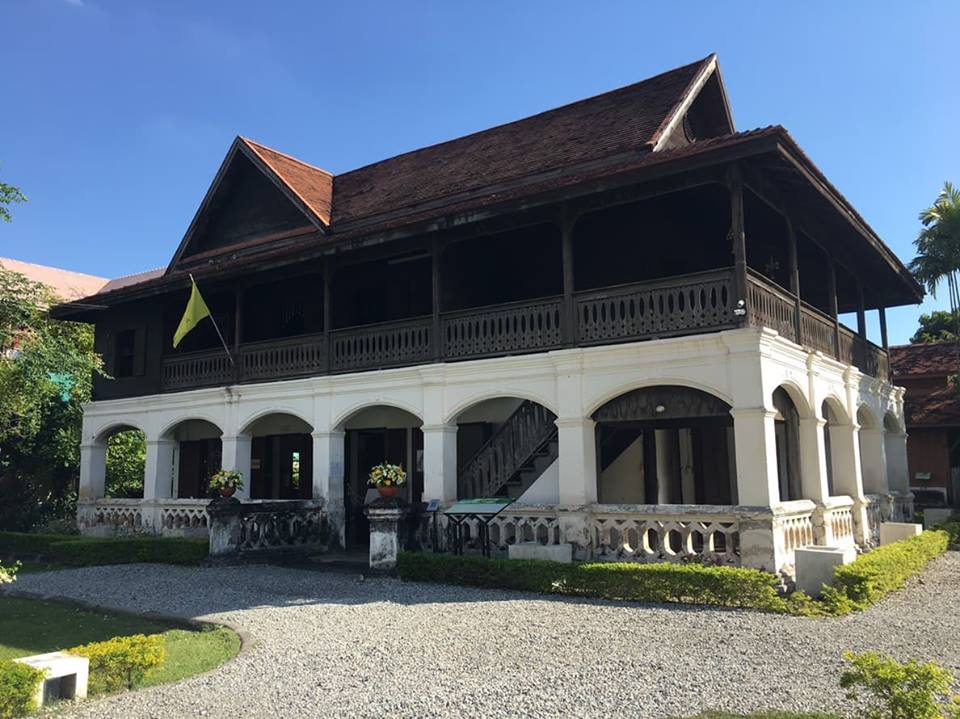
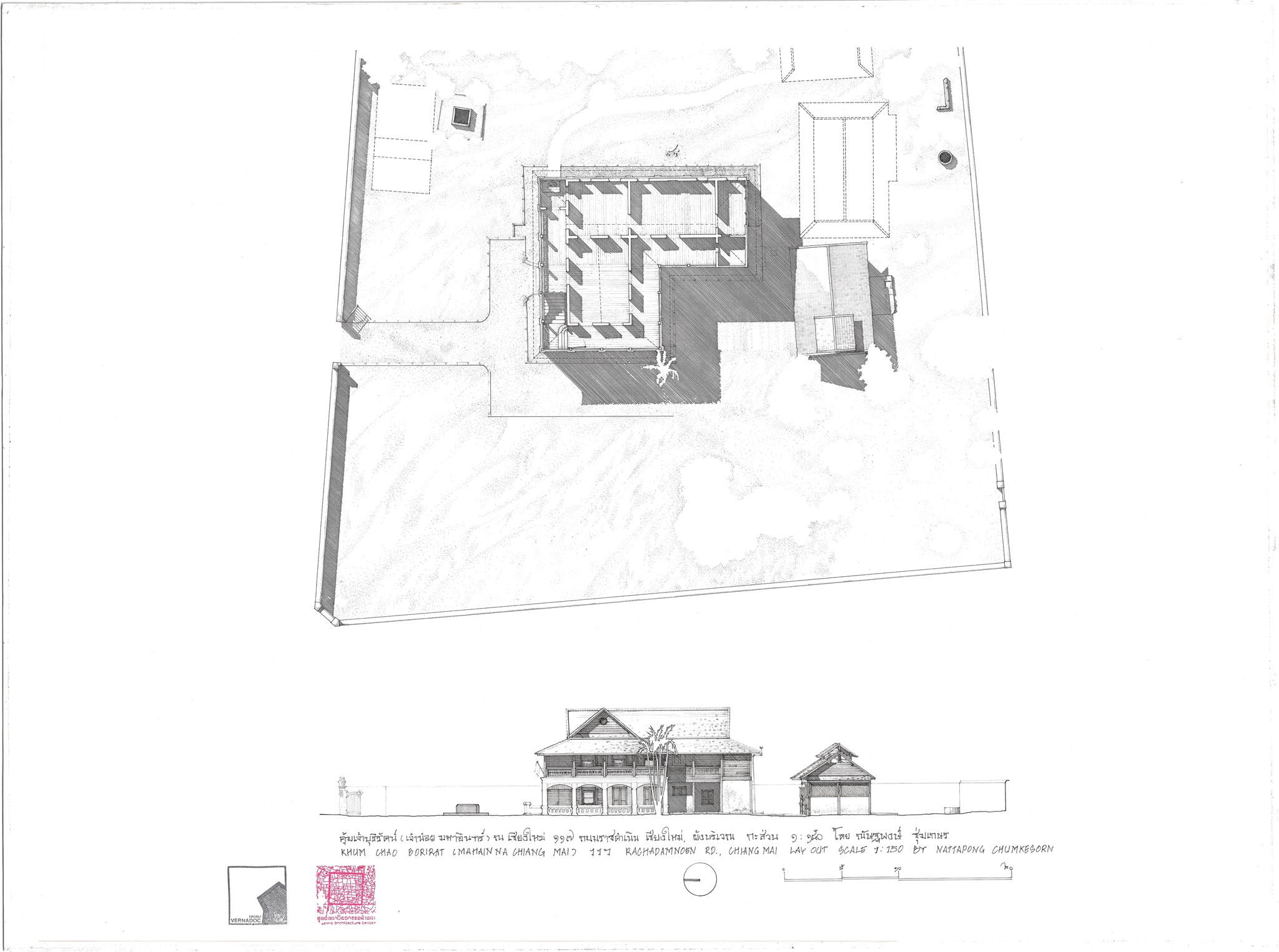
Khum Chao Burirat Mahain Building is an example of the architecture work where local and western style are perfectly combined. The building is a two storey house with hip and gable roof and balcony encircled. Chao Burirat shows the western influence on native architecture in early Chiang Mai times, which portrayed through the concrete and lumber style of the building.
Moreover, the building technique – connecting the wood together- is also influenced from the change of the economic system and society of Chiang Mai during the late region of King Rama V. The Khum was a two storey house, built with half concrete, and half wood. The stairs are outside the house. The first floor was constructed by thick brick walls with a round arch arcade. The second floor also has an arcade, however, was built of teak with hip and gable roof using clay roof-tile. At present, the building is still in good condition, implying the innovative durable construction of ancient times.
Building Restoration
Khum Chao Burirat Mahain Building Renovation and Reparation Plan
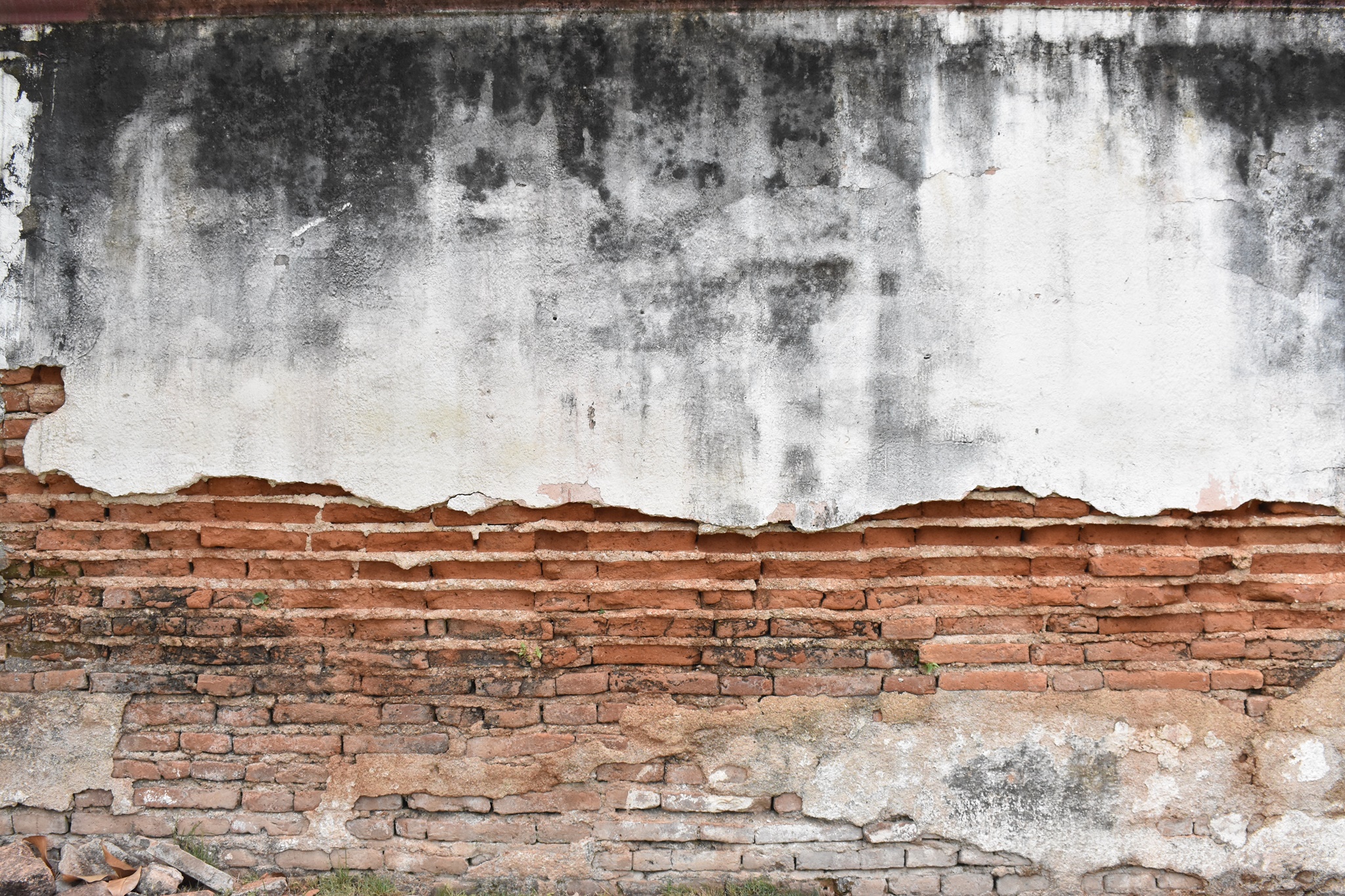
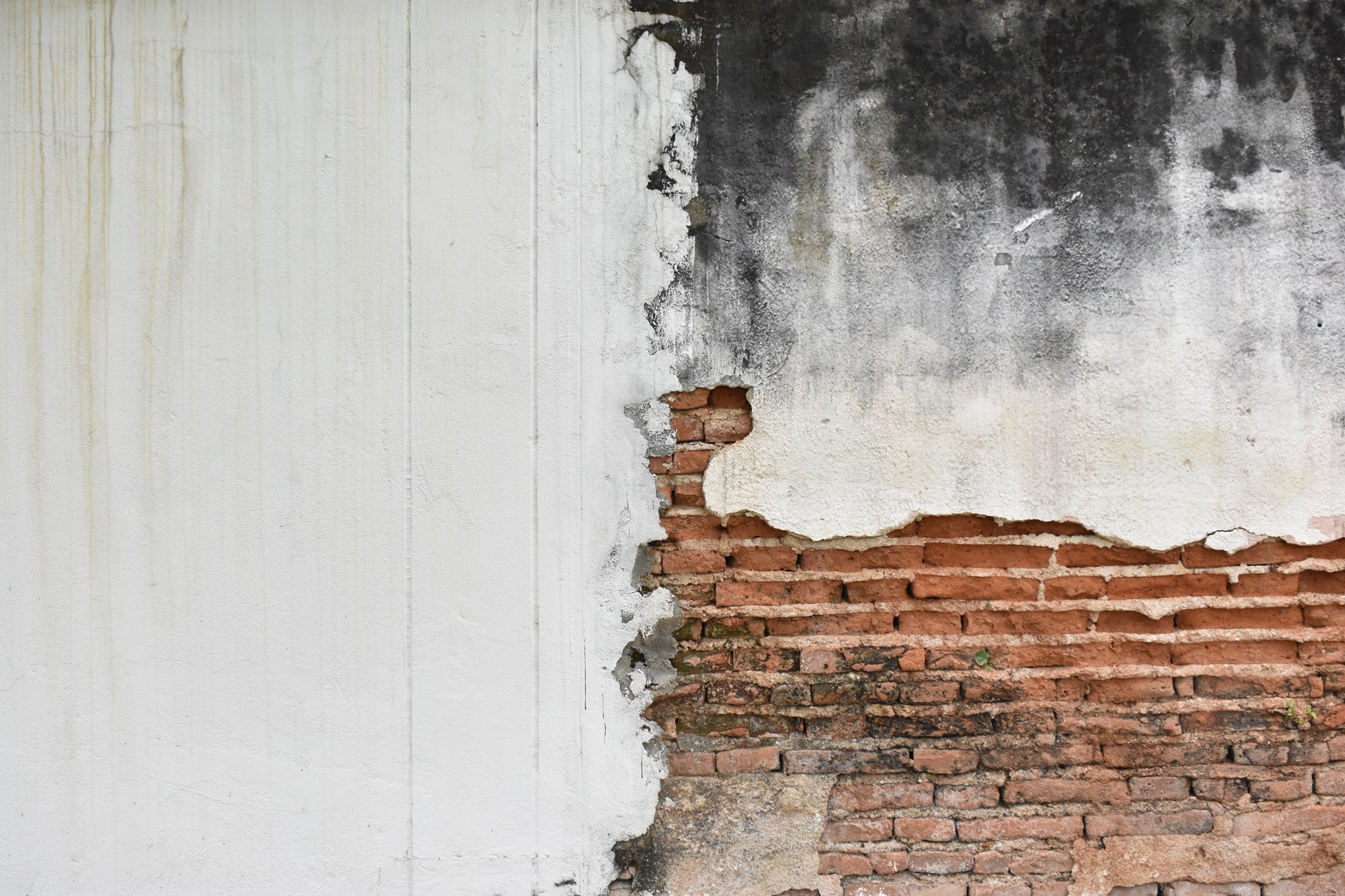
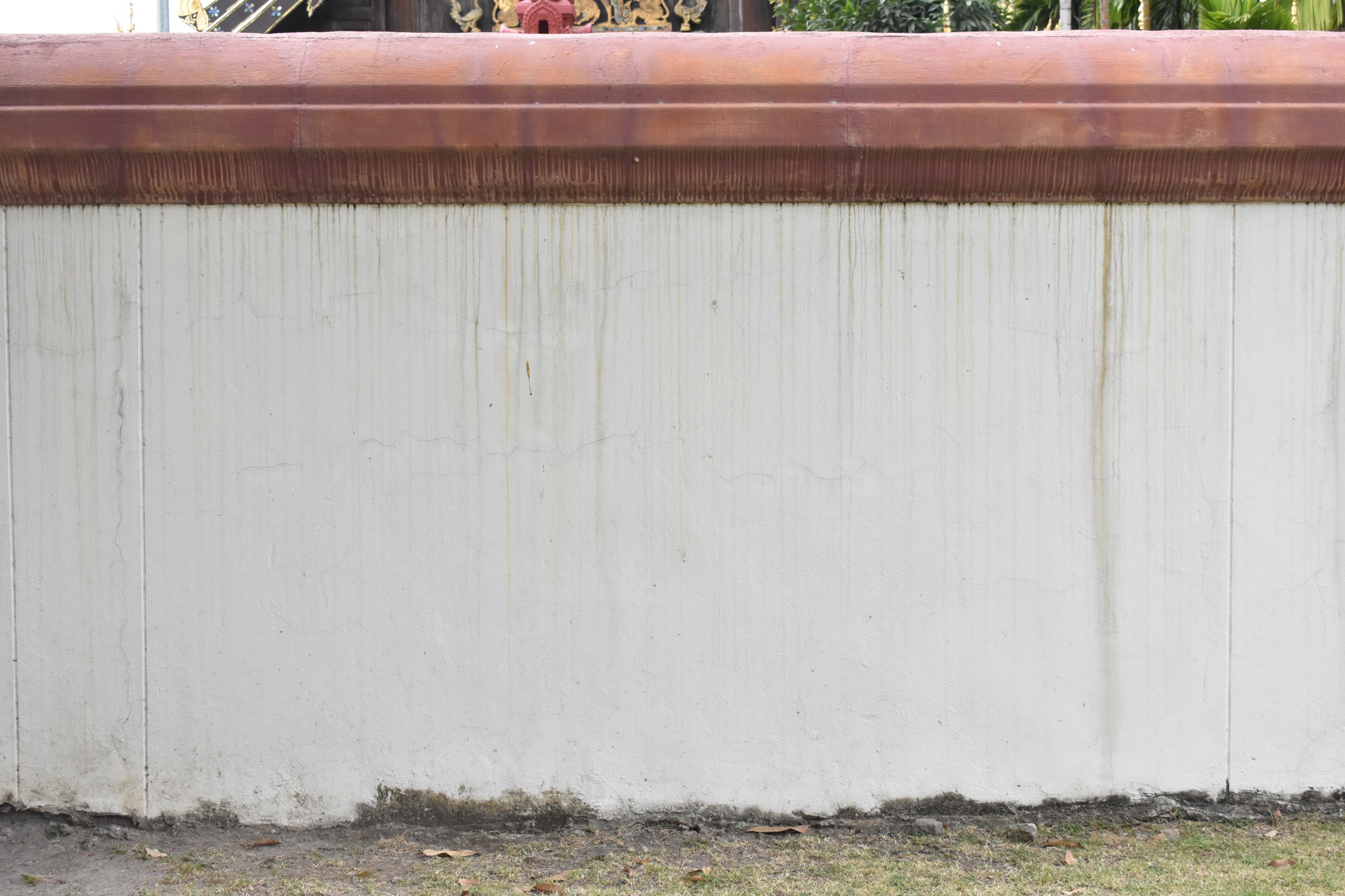
- Repair the building to preserve it to be the same as in the past as well as repair to use as an exhibition and restoration place.
- Improve the engineering system including electrical and lighting engineering, water supply and sanitation of the building and around the building.
- Improve the environment- decorate the garden in the area, repair the old gate, improve the outside area to support the activities that will be set up in the future.
- Repair the kitchen behind the main building so that it can be used together.
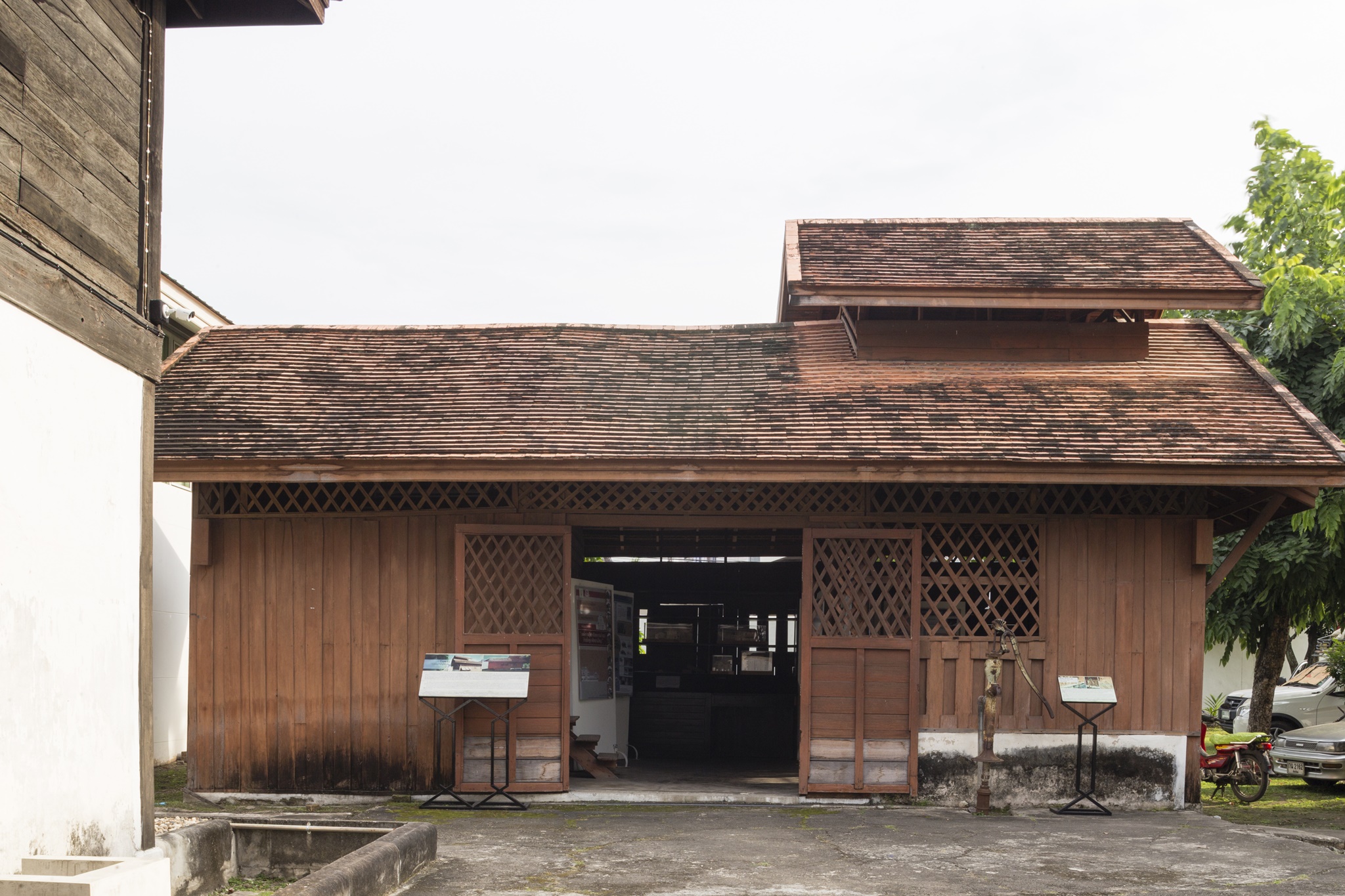
Renovating Khum Chao Burirat Mahain Building to a Lanna Architecture Center does not come cheap. The Faculty of Architecture, Chiang Mai University has drawn up a budget for this process, however the budget is still low. For this reason, if you would like to be a part of Khum Chao Burirat Mahain Building preservation to pass on one of the valuable Thai architectures to the young generation, the donation can be made directly at the Faculty of Architecture, Chiang Mai University
Virtual Museum
View Khum Chao Burirat Mahain Here!
Award
